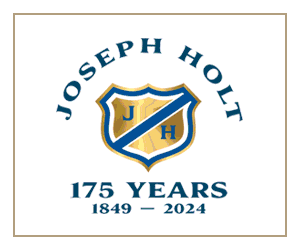Andrea Sandor investigates a dearth of clean air...
A year ago, in June 2018, Think Tank IPPR released a report calling Greater Manchester’s pollution levels “lethal and illegal”. The report called on Mayor Andy Burnham to urgently ramp up measures to improve air quality and for central government to give him the tools to do so.
Yet one year on, the Northern Quarter Forum has had to fight tooth and nail to close Stevenson Square to traffic for just five hours to celebrate Clean Air Week. This, coupled with the Great Ancoats Street fiasco – a multi-million pound plan to create a 'European-style boulevard' without any cycle infrastructure – raises red flags.
So this week, as we celebrate (our dearth of) clean air, let’s explore what’s being done to fight Manchester’s air pollution crisis – and whether it’s really enough.
The stakes are high, the consequences dire. Strong, decisive action is required to rid Manchester of its poisonous air.
An ambitious pledge
Andy Burnham has pledged to make Manchester a leading green city in Europe.
It’s a high-reaching goal, considering Central Manchester currently has the highest rate of emergency admissions for asthma in England–over double the national average–and Manchester is the second-worst council area in England for inhalable particulate matter. Greater Manchester is also the most congested region outside of London, with 152 roads in breach of legal NO2levels.
All in all, 1,200 lives are lost each year due to air pollution. If we’re to bring that number down to zero, we need to look for inspiration.
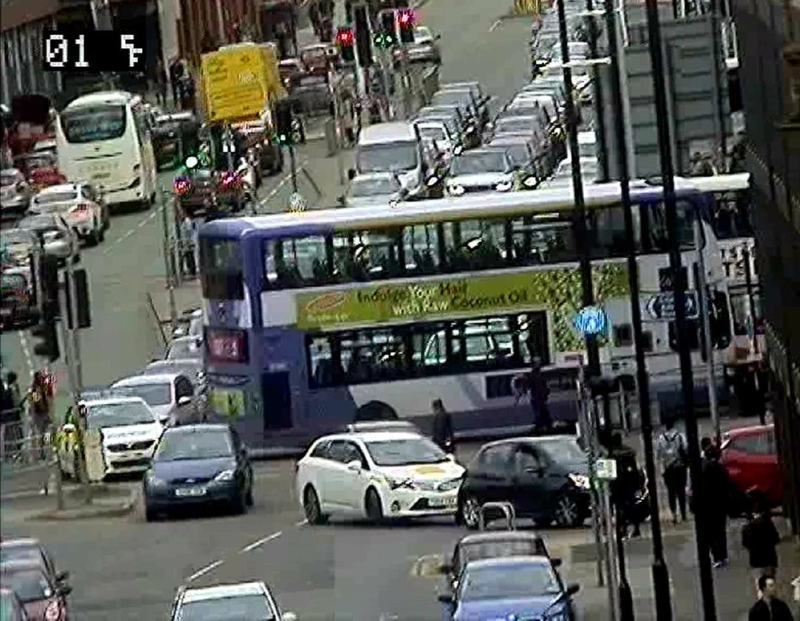
Oslo, European Green Capital 2019, prioritises pedestrians and cyclists in the city centre, and is transitioning to a completely car-free city centre. All public transport will run on renewable energy from 2020, and over 700 on-street parking spaces were removed, replaced with cycle lanes, pocket parks and seating areas. Since the 1980’s Oslo has had tolled ring roads, and in 2017 introduced a further congestion charge.
The message is clear: becoming a leading green city means reducing the number of vehicles on the road. Switching to electric cars won’t save us because worn tyres and brakes produce particulate matter, the micro plastic particles penetrating the deepest parts of our lungs and bloodstream.
What’s required, instead, is improved public transport – currently often both less convenient and more expensive than driving – as well as prioritising walking and cycling.
So with Burnham’s ambitious – and worthy – pledge in mind, let’s see what Manchester is doing.
Is enough being invested in public transport?
Last year, Burnham revealed his 'Congestion Deal', which includes a £122m Bus Priority Package (shepherding 9,000 more passengers a week) and £83m on 27 new trams. The deal also commits 40,000 more seats on commuter trains, and trebles the number of electric vehicle charging points in the region to 1,000.
Manchester’s Clean Air Plan also includes £116m government-funded schemes for HGV’s, buses, taxis, and businesses upgrading to cleaner vehicles, as well as loans with preferential rates for those taking advantage of the funds.
While that may look like a lot of investment, it pales in comparison to the nearly £6 billion being considered on road schemes, as outlined in a recent Guardian article. Moreover, research has repeatedly shown the benefits of road expansion are short-lived, “inducing”more car journeys leading to increased congestion and pollution overall.
Burnham has demanded central government provide the same subsidies to northern bus fares as those in London. Whereas it costs £4 in Greater Manchester for a single bus fare, the rate is capped at £1.50 in the capital.
When I asked the Clean Air Plan folk at TfGM what’s the one thing government could do to help, they told me this: “to agree a devolved multi-year transport funding settlement with Greater Manchester” that includes ongoing funding “to help us to transform public transport services to meet modern expectations as people experience in other cities across Europe.”
As long as central government doesn’t provide new funds, and the bulk of existing funding is pumped into motorways instead, Manchester won’t become a leading green city.
Are walking and cycling being prioritised?
Burnham’s Congestion Deal also outlined a 'Streets for All' approach, in which streets would be designed “for all road users” to enable alternatives to driving.
Chris Boardman became Greater Manchester’s first Walking and Cycling Commissioner in 2017 with an initial £160m earmarked to begin creating 'Bee Network' safe cycle routes throughout the city – making Manchester a truly European city.
That funding has now been allocated and the first projects are coming to fruition.
However, it only accounts for 11% of the £1.5 billion needed to complete the Bee Network and Boardman, along with five other leading cycling commissioners, are demanding government commit long-term funding to safe cycle infrastructure.
Boardman calls painted bike lanes a “waste of public money”, which encourage drivers to speed up, endangering cyclists. “Actual” bike infrastructure is needed, such as segregated cycle lanes.
That’s why Manchester City Council’s announcement last week of the £9.1m Great Ancoats Street improvement scheme – maintaining five lanes of motor traffic with no cycle infrastructure along one of the city’s most polluted and dangerous thoroughfares – has provoked anger and despair.
The council’s justification, “This scheme does not incorporate a segregated cycleway – as we need to balance the needs of different road users,” illustrates a business-as-usual mindset of car-dominated planning – completely at odds with the scale of the challenge Manchester faces in turning around its air quality crisis.
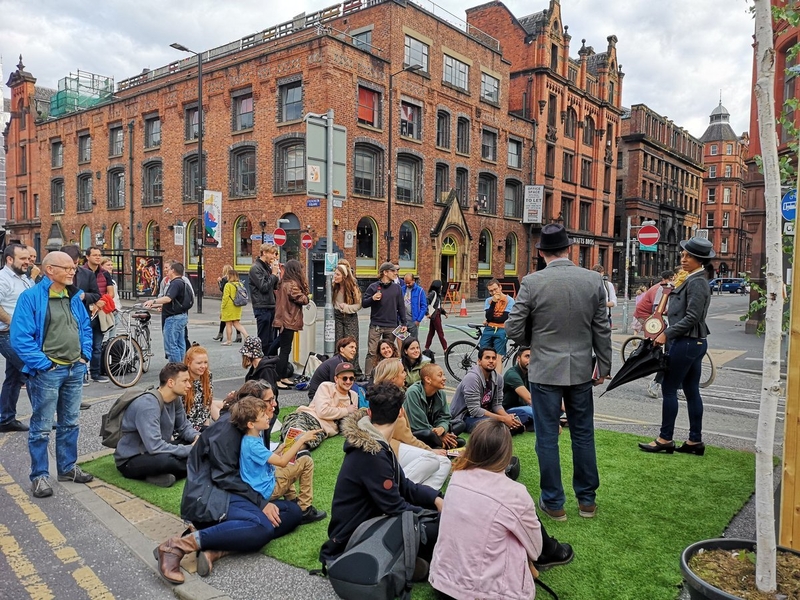
There’s also a long way to go towards prioritising walking and cycling in the city centre.
When Manchester City Council refused permission to close Stevenson Square to traffic for just five hours for the community to celebrate Clean Air Week, Northern Quarter Forum members took matters into their own hands.
They developed a plan to reroute the 13 buses that traverse Lever Street and presented it to the Highways department (essentially having done their job for them). Then it was actually Councillor Angeliki Stogia who took the reins and pushed the request through.
Apart from Stogia, this lack of support for a resident’s group advancing what should be the Council’s agenda is troubling. This, along with Great Ancoats Street, suggests a council not taking a “Streets for All” approach seriously, without the will to prioritise alternatives to driving in the city centre.
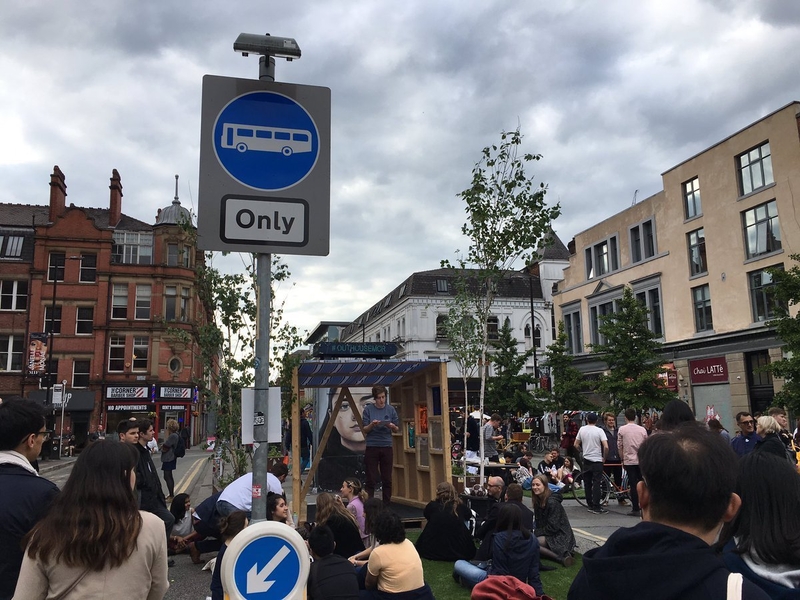
Is a congestion charge being introduced?
In the past year, the main focus has been developing a 'Clean Air Zone', covering all of Greater Manchester. The scheme would charge the most polluting buses, taxis, heavy and lights goods vehicles entering the zone.
This Clean Air Zone isn’t a congestion charge because it doesn’t charge polluting private vehicles. However, congestion charges are shown to be highly effective.
When Stockholm introduced their congestion charge 11 years ago, it was dubbed “the quickest way to commit political suicide.” The charge began with just 25% public approval – but when congestion dropped by 20%, public opinion changed rapidly. After a seven-month trial period, a referendum made the scheme permanent, and public approval now stands near 70%. Revenue from the scheme has funded new metro lines and active travel improvements.
TfGM argue that charging private cars will hurt the poorest in society. However, ONS data show that while nearly all households in the richest 10% by income own a car, just a third of those in the lowest 10% own one. And nearly all homeowners have at least one car, compared to less than half of households in social housing.
In reality, households on lower incomes are far more likely to rely on public transport, and are disproportionately impacted by poor air quality.
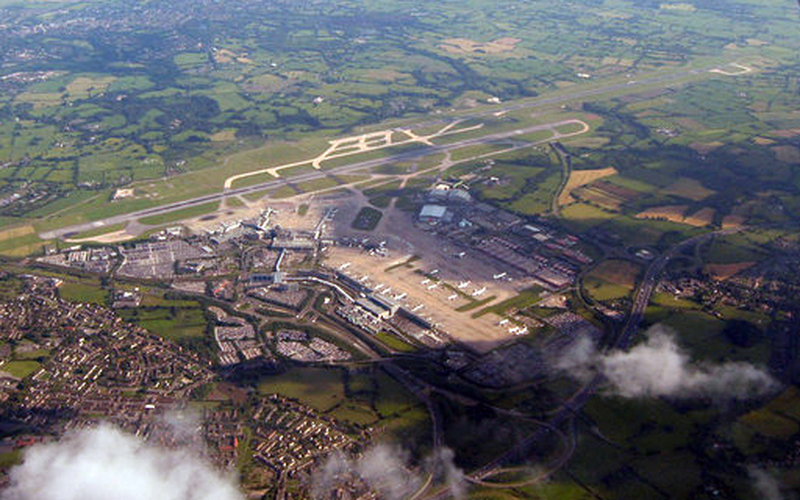
The elephant in the room: the airport
Burnham has pledged to make Greater Manchester carbon neutral by 2038.
It’s difficult to imagine how this is possible, considering that Manchester Airport – 65% owned by Manchester City Council – is expanding. Over the next 20 years, it plans to double passenger numbers.
Globally, aviation emissions are growing so quickly that if not checked they will account for nearly the entire annual global CO2budget by 2050. Here in Manchester, Pete Abel of Manchester Friends of the Earth told the Guardian the current airport expansion plans would blow “our carbon budget twice over”.
A lack of follow-through
The stakes are high, the consequences dire. Strong, decisive action is required to rid Manchester of its poisonous air.
While Burnham has the vision, he doesn’t have the power. Without buy-in and consistent action from the ten councils as well as central government, there’s only so much that can be accomplished – and it won’t be enough.
Buses must be subsidised by central government and fully regulated. Public transport must become convenient and cheaper than driving.
Central government must commit long-term funding to cycle infrastructure, and all city streets – including Great Ancoats Street – must enable walking and cycling.
We must respond to the Clean Air Zone conversation, hold our elected representatives to account, let them know 'business as usual' is no longer acceptable, and demand action to match the rhetoric.
Follow @wordstoseeby on Twitter
What you can do
Tell TfGM what you think of the Clean Air Zone and their other plans by joining the conversation and responding to their survey by 30th June.
Sign the petition and join campaigners to protest the Great Ancoats Street scheme and demand cycle infrastructure be included. Wednesday 26thJune for a 6pm set off from Stevenson Square.
Save New Islington Green – a green space precious to its community – on which Manchester City Council plan to build offices. Feedback to the council by 26thJune and sign sign the petition petition (they already have over 2,000 and only need a couple hundred more!)
Visit one of the many events taking place across Manchester as part of this year’s sustainability summer.
Visit a bike road show event in your community this week and try out an electric bike.
Learn more about what you can do to reduce air pollution.






